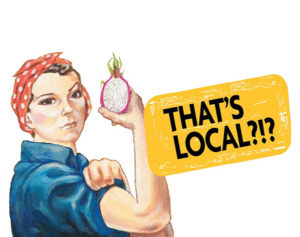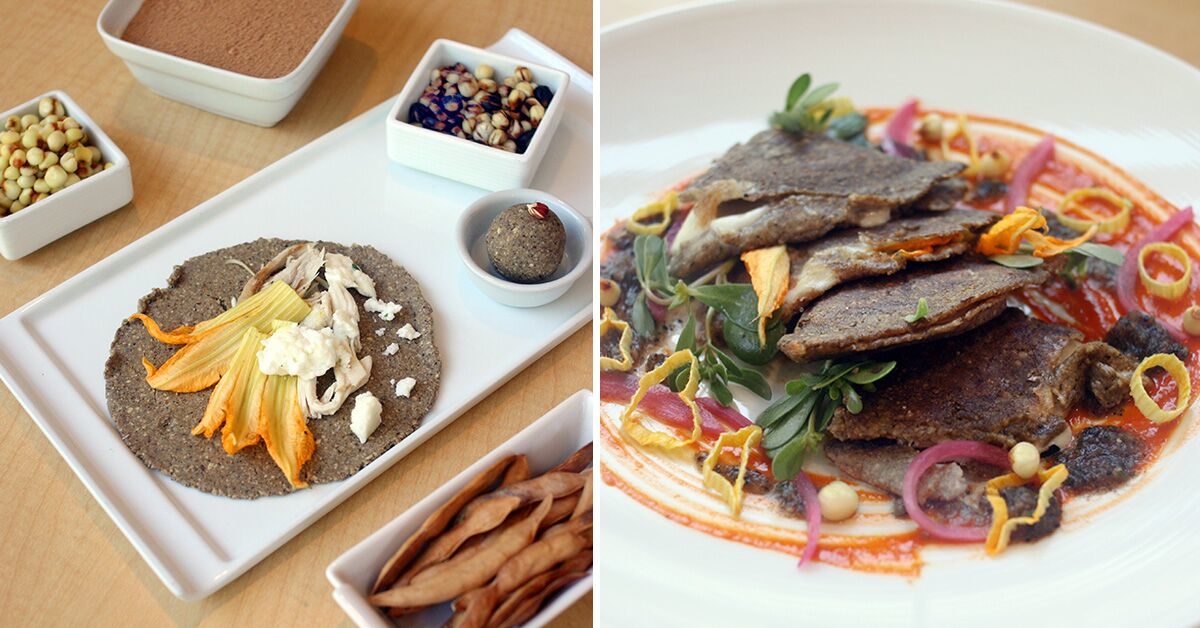THAT’S Local?!? From Aronia to Yak, Bon Appétit Management Company Chefs Seek Out Surprising Locally Grown Ingredients
The company’s 13th annual Eat Local Challenge celebrates produce and meat grown or raised within 150 miles — and showcases some shockers.
 PALO ALTO, CA (September 26, 2017) — More and more people are seeking out and Instagramming #localfood. In order to tickle these increasingly jaded palates — and challenge our chefs just a little bit extra — Bon Appétit Management Company cooked up a new twist for our 13th annual Eat Local Challenge, held today at our cafés in 33 states.
PALO ALTO, CA (September 26, 2017) — More and more people are seeking out and Instagramming #localfood. In order to tickle these increasingly jaded palates — and challenge our chefs just a little bit extra — Bon Appétit Management Company cooked up a new twist for our 13th annual Eat Local Challenge, held today at our cafés in 33 states.
In addition to the standing requirement to make a meal from ingredients grown or raised entirely within 150 miles,* this year the chefs had to include a wild card that few guests would guess was being grown in their region.
“Our chefs are themselves actually the surprise ingredient. This extra challenge just allowed the depth and breadth of their creativity to shine.”
And did they ever come through! From out-of-left-field proteins (yak at the College of Idaho in Caldwell, ID; buffalo at Emmanuel College in Boston; or saltwater shrimp at Hillsdale College in Hillsdale, MI) to unpredictable produce (truffles at the Marketplace Café in Cary, NC; botanical teas at Furman University in Greenville, SC; or an all-Indian menu with coriander, turmeric, and ginger grown on campus at Hampshire College in Amherst, MA), and grains (mesquite flour at Musical Instrument Museum in Phoenix), the surprise ingredients in these dishes show just how far the local-food scene has evolved since Bon Appétit first started the challenge in 2005.
They also show how sophisticated Bon Appétit’s culinary teams have become in their partnerships with local farmers, ranchers, and fishermen.
“In many ways this was one of our most fun Eat Local Challenges, along with 2012’s Eat Local (Fish) Challenge,” said Thom Fox, a San Francisco–based Bon Appétit executive chef and Well-Being Indicator™ program culinary facilitator. For many years, Thom has vetted the hundreds of Eat Local Challenge menus for their true localness, flagging any spices or premade ingredients (such as tortillas) that might not qualify. “The chefs really ran with the surprise ingredient, and in fact, I realized that our chefs are themselves actually the surprise ingredient. This extra challenge just allowed the depth and breadth of their creativity to shine.”
Here’s a small sample of the inventive, resourceful Eat Local Challenge dishes being served around the country today:

YAKKING ABOUT LOCAL FOOD: Hobbit Hill Farm in McCall, ID, is pasture-raising yak, an alternative protein that Bon Appétit featured at the College of Idaho for Eat Local Challenge 2017.
IDAHO-RAISED Hobbit Hill Farm Yak Stew
with Blue Barn Produce carrots, potato, and onion and Purple Sage Farms rosemary, thyme, parsley, and basil, accompanied by local garlic roasted red potatoes and roasted sweet corn with local butter
— Executive Chef Barry Korte, The College of Idaho, Caldwell, ID
MASSACHUSETTS-GROWN Baingan Bharta (Curried Eggplant), Gujarati Green Beans, Oven Roasted Delicata Arches, Madras Beef Curry, Tomato and Herbs Wheat Berries, Indian Spiced Greens, and Sweet Potato Gobi
with Hampshire College Farm Center garlic, ginger, fresh coriander berries, dill, cilantro, edamame, red pepper flakes, hot peppers, greens, tomatoes, and more; Four Star Farms wheat berries; additional produce from Horse Listeners Orchard; and canola oil from Full Sun Company
— Executive Chef Jamil Y. Asad, Hampshire College, Amherst, MA
MINNESOTA-RAISED Oven-Roasted Ferndale Market Turkey Tenderloins with Blue Fruit Farm Organic Aronia Berry (a kind of chokeberry) and Pepin Heights Sweet Tango Apple Reduction
plus buttermilk cauliflower purée, sautéed zucchini, and yellow squash splashed with basil tomato vinegar drawing from Hastings Cooperative Creamery, Seeds Farm, Mhonpaj’s Organic Garden, Smude Farm, and Leatherwood Vinegary
— Executive Chef John Hansen, University of Northwestern – St. Paul, MN
NORTH CAROLINA–RAISED Roger Cattle Pork Loin with Rosemary Truffled Pear Demi Glace
using Garland truffles, Lindley Mills polenta; Deal Apple Orchards pears; Lyon Farms garlic, red potatoes, rainbow chard, butternut squash, and onions; and Maple View Farm butter and cream
— Executive Chef Michael Mahony, Marketplace Café, Cary, NC
ARIZONA-GROWN Mesquite Flour Quesadillas with Crow’s Dairy Goat Cheese Curds, Two Wash Ranch Chicken, and Maya’s Farm Organic Squash Blossoms
including house-made nixtamal using Ramona Farms heirloom corn, foraged verdalagas (purslane) garnish, and house-made, locally grown pasilla habanero salsa
— Executive Chef/Regional Forager Chris Lenza and Baker Yesenia Perrino, Café Allegro at the Musical Instrument Museum, Phoenix
CALIFORNIA-GROWN Stephens Farmhouse Walnut and Full Belly Farm Jujube Tart
with Full Belly Frassinetto wheat flour, B-Z Bee Pollination clover honey, Glaum Egg Ranch eggs, Straus Family Creamery butter, and Sonoma Pacific Sea Salt spice ace
— Executive Pastry Chef Terri Wu, Bakery 300, Oracle, Redwood Shores, CA.
*The only exceptions are salt, which gets a free pass, and seafood from within 500 miles, if caught/raised by a registered Bon Appétit Fish to Fork vendor.

MESQUITE MAGIC AT MIM: Executive Chef/Regional Forager Chris Lenza and Baker Yesenia Perrino at Café Allegro at the Musical Instrument Museum in Phoenix make their own nixtamal for the tortillas in these all-local quesadillas, mixing dried local heirloom corn with mesquite flour (which is milled from the husks of dried mesquite pods and has a low glycemic index and a nutty flavor) for the maseca (corn flour masa). Yesenia taught the technique to Chris, a process she learned from her grandmother that is common in the Sonora region of Mexico.
About Bon Appétit Management Company
Bon Appétit Management Company (www.bamco.com) is an on-site restaurant company offering full food-service management to corporations, universities, and museums, as well as operating public restaurants. Based in Palo Alto, CA, Bon Appétit has more than 1,000 cafés in 33 states. Bon Appétit first launched its Farm to Fork local-purchasing program in 1999, requiring its chefs to source at least 20 percent of their ingredients from small, owner-operated farms, ranches, and foodcrafters within 150 miles of their kitchens. There are now more than 1,400 Farm to Fork vendors in Bon Appétit’s network, on which it spends tens of millions annually. Bon Appétit has also developed programs addressing the overuse of antibiotics, sustainable seafood, the food and climate change connection, humanely raised meat and eggs, and farmworkers’ rights.
Media contact: Bonnie Powell, Director of Communications, [email protected]